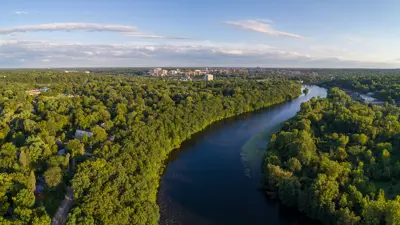Identifying Features
-
2 to 3 inches long; green, brown, olive, or combination skin, with a white belly.
-
One of the most abundant frogs in the state.
-
Relatively tolerant of open, sparsely vegetated sites.
-
Spends most of their time around water’s edge.
-
Dispersal to new habitat is not uncommon – usually a large group of juveniles will migrate together.
-
Over-winter in water, shallowly buried in mud or debris.
-
Typically dormant from early November to early April, but some may be active on sunny days even in mid-winter.
Call
-
Low twang like a loose banjo string, “c’tung,” given during the day.
Breeding
-
Begin calling in early to mid-May and continues possibly into August.
-
1,000-5,000 eggs laid attached to emergent or surface vegetation.
Development
-
Eggs hatch in 3-5 days.
-
Some tadpoles transform in late summer, but many over-winter as tadpoles and transform during second summer.
-
Reach maturity in two to three summers.
Habitat Type
- Ephemeral wetlands.
- Permanent wetlands.
- Forests.
- To a lesser extent, they may be found in agricultural areas.




 734.794.6627
734.794.6627

